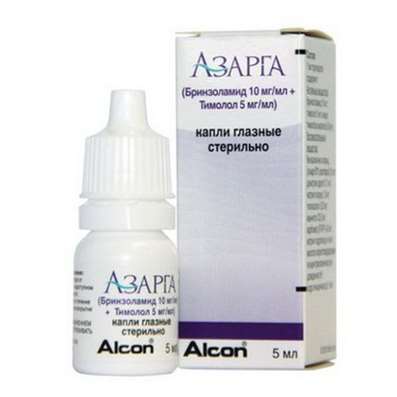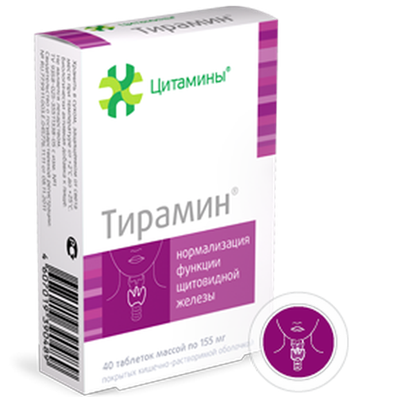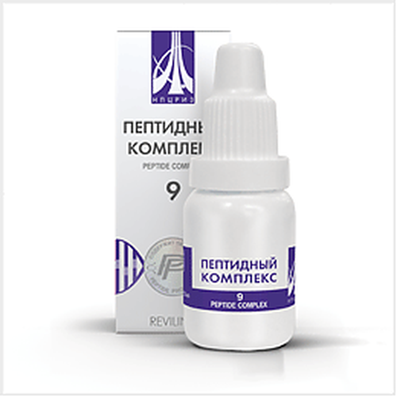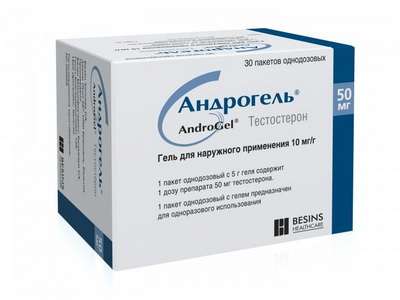Instruction for use: Sorbilact
I want this, give me price
Dosage form: Solution for infusions
Active substance: Kalii chloridum + Calcii chloridum + Magnii chloridum + Natrii lactas + Natrii chloridum + Sorbitolum
ATX
B05XA31 Electrolytes in combination with other drugs
Pharmacological groups
Regulators of water and electrolyte balance and acid-base balance in the combinations
Substitutes for plasma and other blood components in combinations
The nosological classification (ICD-10)
A41.9 Septicemia, unspecified: Septic diseases; Septicemia / bacteremia; Toxico-infectious shock; Endotoxin shock; Bacterial septicemia; Bacterial infections of severe course; Generalized infections; Generalized systemic infections; Infections generalized; Wound sepsis; Septiccopymia; Septic-toxic complications; Septicemia; Septic conditions; Septic shock; Septic condition; Septic shock
E05.9 Thyrotoxicosis, unspecified: Thyrotoxic reaction; Thyroid enlargement with hyperthyroidism; The phenomenon of iodine-Bashedov; Hyperplasia of the thyroid gland; Hyperthyroid status; Hyperfunction of the thyroid gland; Thyroid dysfunction; Diffuse thyrotoxic goiter; Latent thyrotoxicosis; Increased function of the thyroid gland; Thyrotoxicosis
E87 Other disturbances of water-salt and acid-base state: Violation of acid-base balance; Water-electrolyte disturbances; Compensation for isotonic sodium deficiency; Replenishment of electrolytes with stored KHS; Deficiency of water and electrolytes; Depletion of alkaline blood reserve; Violation of the water-salt balance; Violation of water-salt metabolism; Violation of water-electrolyte exchange; Violation of KHS; Violation of electrolyte balance; Violations of the water-salt balance; Violations of the water-electrolyte state; Violations of the electrolyte balance; Loss of salts and fluids in diarrhea; Extracellular dehydration
G93.2 Benign intracranial hypertension:Intracranial hypertension; Intracranial hypertension; Persistent cerebral hypertension; Increased intracranial pressure
G93.6 Brain edema: Intraoperative cerebral edema; Cerebral edema; Post-traumatic swelling of the brain; Brain edema associated with radiation therapy; Brain edema associated with head trauma; Post-traumatic cerebral edema; Edema of the brain in poisoning
K56.6 Other and unspecified intestinal obstruction: Intestinal obstruction; Mechanical violation of food passage; Intestinal obstruction; Sigmoid and cecum turn; Functional intestinal obstruction; Violation of intestinal patency; Syndrome of distal intestinal obstruction; Intestinal obstruction mechanical
K65 Peritonitis: Abdominal infection; Intra-abdominal infections; intra-abdominal infections; Diffuse peritonitis; abdominal Infections; Infections of the abdominal cavity; The infection of the abdominal cavity; The infection of the gastrointestinal tract; Spontaneous bacterial peritonitis
K72 Hepatic insufficiency, not elsewhere classified (including hepatic coma): Liver cell insufficiency; Pronounced hepatic encephalopathy; Coma hepatic; Latent hepatic encephalopathy; Insufficiency of the liver; Hepatic coma; Hepatic coma and precoma; Hepatic encephalopathy; Development of hepatic impairment; Encephalopathy of the liver; Inflammatory liver disease; Gepatargy; Encephalopathy portosystemic; Hepatocellular insufficiency; Hepatic precoma and coma; Portal-systemic encephalopathy
K76.9 Liver disease, unspecified: Change in liver function in heart failure; Restoration of impaired liver function; Severe liver function disorders; Hepatitis; Hepatosis; Hepatopathy; Liver dysfunction; Diseases of the liver; Impaired liver function; Dysfunction of the liver; Infringements of function of a liver of an inflammatory etiology; Functional liver failure; Functional disorders of the liver; Chronic liver disease; Chronic diffuse liver disease; Enterogenic diseases of the gallbladder and liver
K81.9 Cholecystitis, unspecified: Infection of the gallbladder and bile duct; Infection of the gallbladder and bile ducts
N19 Renal failure, unspecified: Hyperazotemia; Uremia; Kidney failure in poisoning
R57.8.0 * Burn shock: Pain shock for burns; Burn shock
R57.9 Shock, unspecified: Pain shock; Hemolytic shock; Neurogenic shock; Shock; Shock condition; Shock states
T79.4 Traumatic shock: Haemorrhagic shock; Crash Syndrome; Posthemorrhagic shock; Postoperative shock; Post-traumatic shock; Post-traumatic shock; Traumatic shock; Syndrome of hemorrhagic shock and encephalopathy
T81.1 Shock during or after the procedure, not elsewhere classified: Operating shock; Postoperative shock; Operational shock
Z100 * CLASS XXII Surgical practice: Abdominal surgery; adenomectomy; Amputation; Coronary angioplasty; Angioplasty of the carotid arteries; Antiseptic skin treatment for wounds; Antiseptic Hand; Appendectomy; atherectomy; Balloon coronary angioplasty; Vaginal hysterectomy; The coronary bypass; Interventions in the vagina and cervix; Interventions on the bladder; Intervention in the mouth; Restoration and reconstructive surgery; Hand hygiene of medical personnel; Gynecologic surgery; Gynecological intervention; Gynecological surgery; Hypovolemic shock during operations; Disinfection of purulent wounds; Disinfection of wounds edges; Diagnostic intervention; Diagnostic procedures; Cervical Diathermocoagulation; Long-surgery; Replacing the fistula catheters; Infection in orthopedic surgery; Artificial heart valve; cystectomy; Short-term outpatient surgery; Short-term operation; Short surgical procedures; Krikotireotomiya; Blood loss during surgery; Bleeding during surgery and in the postoperative period; Kuldotsentez; laser photocoagulation; laser coagulation; retinal laser coagulation; Laparoscopy; Laparoscopy in Gynecology; CSF fistula; Small gynecological operations; Small surgical procedures; Mastectomy and subsequent plastic; mediastinotomy; Microsurgical operations on the ear; Mukogingivalnye operation; suturing; Minor surgery; neurosurgical operation; Immobilization of the eyeball in ophthalmic surgery; testectomy; pancreatectomy; Perikardektomiya; The period of rehabilitation after surgery; The period of convalescence after surgery; Percutaneous transluminal coronary angioplasty; Pleural thoracentesis; Pneumonia postoperative and posttraumatic; Preparation for surgical procedures; Preparation for surgery; Preparation of the surgeon's hands before surgery; Preparation of the colon for surgical procedures; Postoperative aspiration pneumonia in neurosurgical and thoracic surgery; Postoperative nausea; Postoperative bleeding; postoperative granuloma; postoperative shock; The early postoperative period; myocardial revascularization; Radiectomy; gastric Resection; bowel resection; uterine Resection; liver Resection; enterectomy; Resection of part of the stomach; Reocclusion of the operated vessel; Bonding tissues during surgical procedures; Removal of sutures; Condition after eye surgery; Condition after surgery; Condition after surgery in the nasal cavity; Condition after gastrectomy; Status after resection of the small intestine; Condition after tonsillectomy; Condition after removal of the duodenum; Condition after phlebectomy; Vascular surgery; Splenectomy; Sterilization of surgical instruments; Sterilization of surgical instruments; sternotomy; Dental surgery; Dental intervention in periodontal tissues; strumectomy; Tonsillectomy; Thoracic surgery; Thoracic surgery; total gastrectomy; Transdermal intravascular coronary angioplasty; Transurethral resection; Turbinektomiya; Removal of a tooth; cataract surgery; Removal of cysts; tonsillectomy; Removal of fibroids; Removing the mobile primary teeth; Removing polyps; Removing broken tooth; Removal of the uterus body; Removal of sutures; Fistula likvoroprovodyaschih ways; Frontoetmoidogaymorotomiya; Surgical infection; Surgical treatment of chronic limb ulcers; Surgery; The surgery in the anal area; The surgery on the colon; Surgical practice; The surgical procedure; Surgical interventions; Surgery on the gastrointestinal tract; Surgical procedures on the urinary tract; Surgical procedures on the urinary system; Surgical intervention of the genitourinary system; Surgical procedures on the heart; Surgical manipulation; surgery; Surgery on the veins; Surgical intervention; Vascular surgery; Surgical treatment of thrombosis; Surgery; cholecystectomy; Partial gastric resection; hysterectomy; Percutaneous transluminal coronary angioplasty; Percutaneous transluminal angioplasty; Coronary artery bypass; tooth Extirpation; Extirpation of milk teeth; pulpectomy; pulsative cardiopulmonary bypass; tooth Extraction; teeth Extraction; cataract extraction; Electrocoagulation; endourological intervention; episiotomy; Etmoidotomiya; Complications after tooth extraction
Z98.8 Other specified post-surgical conditions: Purulent complications in the postoperative period; Suppurative complications of surgery; Postoperative liver dysfunction; Postoperative vomiting; Postoperative complications; Postoperative period; Early postoperative period
Composition and release form
Solution for infusion 1 ml
active substance: Sorbitol 200 mg
Sodium lactate 19 mg
Sodium Chloride 6 mg
Calcium chloride (in terms of dry matter) 0.1 mg
Potassium chloride 0.3 mg
Magnesium chloride (in terms of dry matter) 0.2 mg
Excipients: water for injection - up to 1 ml
Ionic composition of the preparation:
Na + 6.395 mg / ml (278.16 mmol / L)
K + 0.157 mg / ml (4.02 mmol / L)
Ca ++ 0.036 mg / ml (0.9 mmol / L)
Mg ++ 0.051 mg / ml (2.1 mmol / L)
Cl-3.995 mg / ml (112.69 mmol / L)
CH3CH (OH) COO-15.635 mg / ml (175.52 mmol / L)
Theoretical osmolarity: 1670 mOsm / l
In glass bottles of 200 or 400 ml; In a pack of cardboard 1 bottle.
Description of dosage form
Transparent colorless liquid.
Pharmachologic effect
Mode of action - Diuretic, anti-shock, detoxification, stimulating energy metabolism, stimulating peristalsis of the intestine, alkalinizing blood.
Pharmacodynamics
The main pharmacologically active substances are sorbitol (in hypertonic concentration) and sodium lactate (in isotonic concentration). In the liver, sorbitol is first converted to fructose, which is then converted into glucose, and then into glycogen. Part of sorbitol is used for urgent energy needs, while the other part is stored as a reserve in the form of glycogen.
Hypertensive sorbitol solution has a large osmotic pressure and a pronounced ability to enhance diuresis.
Unlike the bicarbonate solution, correction of metabolic acidosis with sodium lactate passes more slowly, as it is included in the metabolism, without causing sharp fluctuations in pH. The effect of sodium lactate is manifested after 20-30 minutes after administration.
Sodium chloride - plazmozameschayuschee means, shows detoxication, rehydration effect, eliminates the deficiency of sodium and chlorine ions in different pathological conditions.
Calcium chloride eliminates calcium deficiency. Calcium ions are necessary for the implementation of the process of transmission of nerve impulses, reduction of skeletal and smooth muscles, myocardial activity, formation of bone tissue, and clotting of blood. Reduces the permeability of cells and the vascular wall, prevents the development of inflammatory reactions, increases the resistance of the body to infections and can significantly enhance phagocytosis.
Potassium chloride restores the water-electrolyte balance. It exhibits a negative chrono- and batmotropic effect, in high doses - a negative foreign, dromotropic and moderate diuretic effect. Takes part in the process of carrying out nerve impulses. Increases the content of acetylcholine and causes excitation of the sympathetic part of the autonomic nervous system. Improves skeletal muscle contractions in muscular dystrophy, myasthenia gravis.
Pharmacokinetics
Sorbitol quickly enters the general metabolism: 80-90% is utilized in the liver and accumulates in the form of glycogen, 5% is deposited in the brain tissues, heart muscle and skeletal muscles, 6-12% is excreted in the urine. When introduced into the vascular bed of sodium lactate interacts with carbon dioxide and water, forming sodium bicarbonate, which leads to an increase in the alkaline reserve of blood. Only half of the injected sodium lactate (isomer L) is considered active, and the other half (isomer D) is not metabolized and excreted in the urine.
Sodium chloride is rapidly excreted from the vascular bed, only temporarily increasing the volume of blood circulation. Do diuresis.
Indications of the drug Sorbilact
To reduce intoxication, improve microcirculation, correction of acid-base balance, improve hemodynamics in traumatic, operating, hemolytic and burn shock;
Peritonitis and intestinal obstruction (in the pre- and postoperative period);
Acute renal failure of different etiologies;
Thyrotoxicosis, sepsis;
Various liver diseases (hepatitis, cholecystitis, acute and subacute liver dystrophy, hepatic coma);
Increased intracranial pressure in case of cerebral edema.
Contraindications
Individual hypersensitivity to the components of the drug;
Alkalosis, as well as cases where the infusion of large amounts of fluid is contraindicated (cerebral hemorrhage, thromboembolism, cardiovascular decompensation, arterial hypertension of the third degree).
With caution: with a violation of the liver, peptic ulcer, hemorrhagic colitis.
Pregnancy and breast-feeding
Data on use during pregnancy and breastfeeding are not available.
Side effects
There may be phenomena of alkalosis or dehydration (due to hyperosmolarity of the solution), allergic reactions (skin rash, itching).
Interaction
Sorbilact® should not be mixed with phosphate- and carbonate-containing solutions. Do not use as a carrier solution for other drugs.
Dosing and Administration
Adults with traumatic, burn, postoperative and hemolytic shock - 200-400 and 600 ml (3-10 ml / kg body weight), once, first with a stream, then with a drip method;
For liver diseases - in a dose of 200 ml (3.5 ml / kg body weight) drip once and repeatedly, daily or every other day.
In acute kidney failure - in a single dose of 200-400 ml (up to 2.5-6.5 ml / kg body weight) drip or jet (again after 8-12 hours).
For the prevention of postoperative intestinal paresis - 150-300 ml (2.5-5 ml / kg body weight) for a single injection, drip; Repeated infusion of the drug every 12 hours during the first 2-3 days after surgery is possible.
For the treatment of postoperative paresis - in a dose of 200-400 ml (3.5-6.5 ml / kg body weight) drip, every 8 hours before the normalization of intestinal motility.
When swelling of the brain - first jet, and then drip (60-80 drops per minute) at a dose of 5-10 ml / kg body weight.
With significant dehydration in / in the infusion of Sorbilact®, only drip (no more than 200 ml of solution per day) should be performed.
Children under 6 years of age are recommended to take the drug in a dose of 10 ml / kg of body weight, from 6 to 12 years - in a dose of half the dose for adults. Children over 12 years - in a dose, the same as for adults.
Overdose
Symptoms: phenomena of alkalosis (quickly pass independently, provided that the drug is discontinued immediately). When dehydration occurs, symptomatic therapy.
Special instructions
The drug is used under the control of acid-base balance parameters, and blood electrolytes, as well as the functional state of the liver. With caution apply in patients suffering from calculous cholecystitis. The drug is used, given osmolarity of blood and urine, as well as acid-base balance. The introduction of sorbilact® to diabetic patients should be carried out under the control of the sugar content in the blood.
Conditions of supply of pharmacies
On prescription.
Storage conditions of the drug Sorbilact
In a dry, the dark place at a temperature of 2-25 ° C.
Keep out of the reach of children.
The shelf life of the drug Sorbilact
2 years.
Do not use beyond the expiration date printed on the package.

 Cart
Cart





